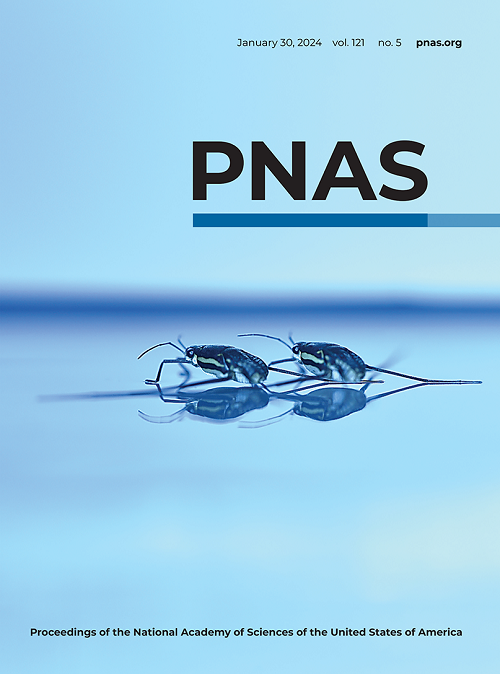Evaluating interdisciplinary research: Disparate outcomes for topic and knowledge base
IF 9.4
1区 综合性期刊
Q1 MULTIDISCIPLINARY SCIENCES
Proceedings of the National Academy of Sciences of the United States of America
Pub Date : 2025-04-18
DOI:10.1073/pnas.2409752122
引用次数: 0
Abstract
Interdisciplinary research is essential for addressing complex global challenges, but there are concerns that scientific institutions like journals select against it. Prior work has focused largely on how interdisciplinarity relates to outcomes for published papers, but which papers get accepted for publication in the first place is unclear. Furthermore, journals may evaluate two key dimensions of interdisciplinarity,—topic and knowledge base,—differently. Topic interdisciplinarity (measured through title and abstract) may incur evaluation penalties by cutting across disciplinary evaluation standards and threatening symbolic boundaries, while knowledge-base interdisciplinarity (measured through references) may incur benefits by combining a large pool of nonredundant information. Evaluations may also depend on how well these dimensions align with each other and the intended audience. We test these arguments using data on 128,950 submissions to 62 journals across STEM disciplines, including both accepted and rejected manuscripts. We find that a 1SD increase in knowledge-base interdisciplinarity is associated with a 0.9 percentage-point higher acceptance probability, while a 1SD increase in topic interdisciplinarity corresponds to a 1.2 percentage-point lower acceptance probability. However, the penalty for high topic-interdisciplinarity diminishes when knowledge-base interdisciplinarity is also high, and when submitted to journals designated as “interdisciplinary.” These findings challenge the narrative of a uniform bias against interdisciplinary research and highlight the importance of distinguishing between its dimensions, as well as their alignment with each other and the intended audience.评估跨学科研究:主题和知识库的不同结果
跨学科研究对于解决复杂的全球挑战至关重要,但有人担心,像期刊这样的科学机构会选择反对它。先前的工作主要集中在跨学科与发表论文的结果之间的关系,但哪些论文首先被接受发表尚不清楚。此外,期刊可能会对跨学科的两个关键维度——主题和知识库——进行不同的评估。主题跨学科(通过标题和摘要来衡量)可能会因为跨越学科评估标准和威胁符号边界而招致评估惩罚,而知识库跨学科(通过参考文献来衡量)可能会因为结合大量非冗余信息而带来好处。评估还可能取决于这些维度如何与彼此和目标受众保持一致。我们使用了来自62个STEM学科期刊的128,950份投稿的数据来检验这些论点,包括被接受和被拒绝的稿件。我们发现,知识基础的跨学科性每增加1SD,接受概率就会提高0.9个百分点,而主题的跨学科性每增加1SD,接受概率就会降低1.2个百分点。然而,当知识库的跨学科性也很高,并且提交给指定为“跨学科”的期刊时,对高主题跨学科的惩罚就会减少。这些发现挑战了对跨学科研究的统一偏见的叙述,并强调了区分其维度的重要性,以及它们彼此之间和目标受众之间的一致性。
本文章由计算机程序翻译,如有差异,请以英文原文为准。
求助全文
约1分钟内获得全文
求助全文
来源期刊
CiteScore
19.00
自引率
0.90%
发文量
3575
审稿时长
2.5 months
期刊介绍:
The Proceedings of the National Academy of Sciences (PNAS), a peer-reviewed journal of the National Academy of Sciences (NAS), serves as an authoritative source for high-impact, original research across the biological, physical, and social sciences. With a global scope, the journal welcomes submissions from researchers worldwide, making it an inclusive platform for advancing scientific knowledge.

 求助内容:
求助内容: 应助结果提醒方式:
应助结果提醒方式:


